Hugging the Danube River on either side, Hungary’s capital rose from the ashes of communism to become what is now one of Eastern Europe’s most dynamic cities. From extravagant palaces to gaudy cathedrals and synagogues to bubbling hot springs and thermal baths, Budapest truly has it all. To take it all in, either plan a long weekend in Budapest, or add 2 days in Budapest if you are visiting Vienna or Prague.
Walking the streets of Budapest, you soon get a sense that you are in a formerly Communist country. Hungary may still be Central Europe, but it has a much grittier vibe than you’ll find in Vienna. You’ll find lots of teens and 20-somethings smoking on the street corner, congregating in parks or slipping in and out of the city’s famous ruin bars. There will also be those plain Soviet-style buildings tucked in between beautiful examples of classical architecture featuring colorful Hungarian tilework. However, if you dig deeper, you will get a sense of deep Hungarian pride.
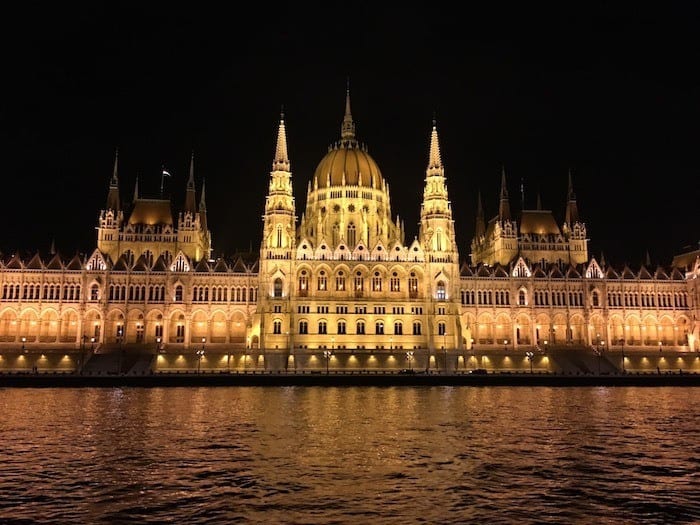
How Many Days in Budapest do you Need?
If you are wondering how many days in Budapest you need, two days is adequate to see the whole city, as long as you’re efficient. Three days will allow you to get to more of the top attractions at a slower pace and maybe give you a chance to relax and soak in one of the thermal baths.
You can add a fourth day if you want plenty of time to relax or you are more interested in exploring the nightlife and ruins bars. But if time is limited, follow this guide on what to do in Budapest in two days.
What to do in 2 Days in Budapest
Just keep in mind that if you are visiting on a weekend, it will be crowded and possibly a little rowdy. Budapest is a popular spot for British Hen and Stag Parties (Bachelor and Bachelorette parties for us Yanks) and is known as a party city for young Europeans that want to check out Budapest’s ruins bars.
If you are looking to do Budapest in 48 hours, you will need to plan ahead and follow this Budapest itinerary. We will walk you through how to structure your days to fit in all the main things to do in Budapest.
Day 1 in Budapest
This post contains affiliate links. If you click on a link and make a purchase, I will receive a small compensation.
Morning Walking Tour
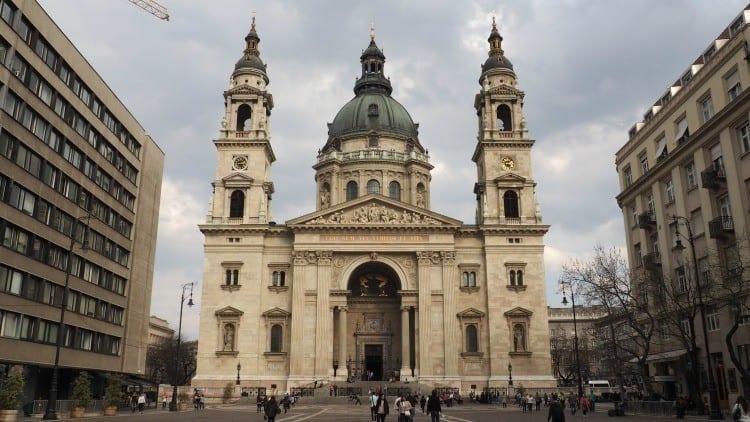
A great way to kick off any visit to a new city is with a guided walking tour to get the lay of the land and learn some of the history and idiosyncrasies of a destination. We started with the Intro to Pest tour from Context Travel to explore the Pest side of the city. It was a great introduction to the city, its architecture, and its very interesting history. Plus, with a Context guide, you know you are getting a highly educated scholar that can lead to such interesting discussions about politics and history. If that isn’t in your budget, you could try a free walking tour.
Make sure you pop into St. Stephen’s Cathedral while you are on the tour and have the guide point out some of its unique features. St. Stephen’s Basilica is a lavish neoclassical church that never fails to stun. A tedious climb to the top of the northern tower offers excellent views of the city.
Afternoon
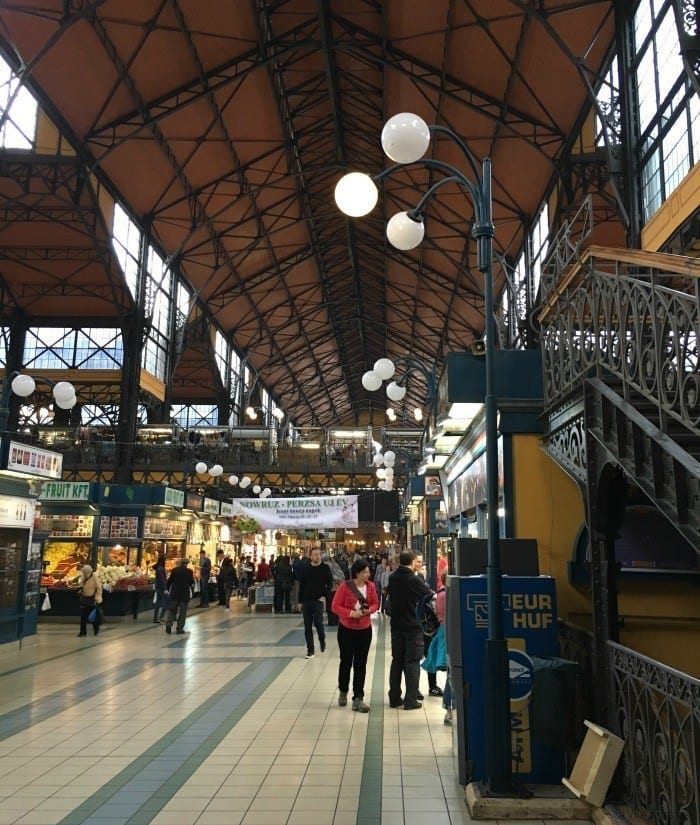
After your tour, either have your guide drop you off at the Central Market, or if they leave you back by St. Stephen’s, make your way to the Vörösmarty Tér for lunch at one of the food stands which offer cheap but delicious and authentic Hungarian cuisine. The food in Budapest is delicious — even the traditional touristy food such as the goulash soup and paprika chicken served at practically every restaurant never fails to please one’s appetite.
Make sure you do get to chance to visit Budapest’s Central Market Hall. This huge food market has a little bit of everything, including handicrafts and local foods like lángos (a deep-fried flatbread). Just make sure you bring cash as most food stalls don’t accept credit cards (or Euro, which can be a bit challenging to convert to forint when you are only staying for two days in Budapest, but you need to convert at least a small amount of cash.)
After lunch, take a stroll down the Váci Utca, a thin street lined with stores, each located in a different, beautiful Neo-Classical building. If you walk all the way down the Váci Utca, you’ll end up at Ferenciek Tér, where you can catch the metro.
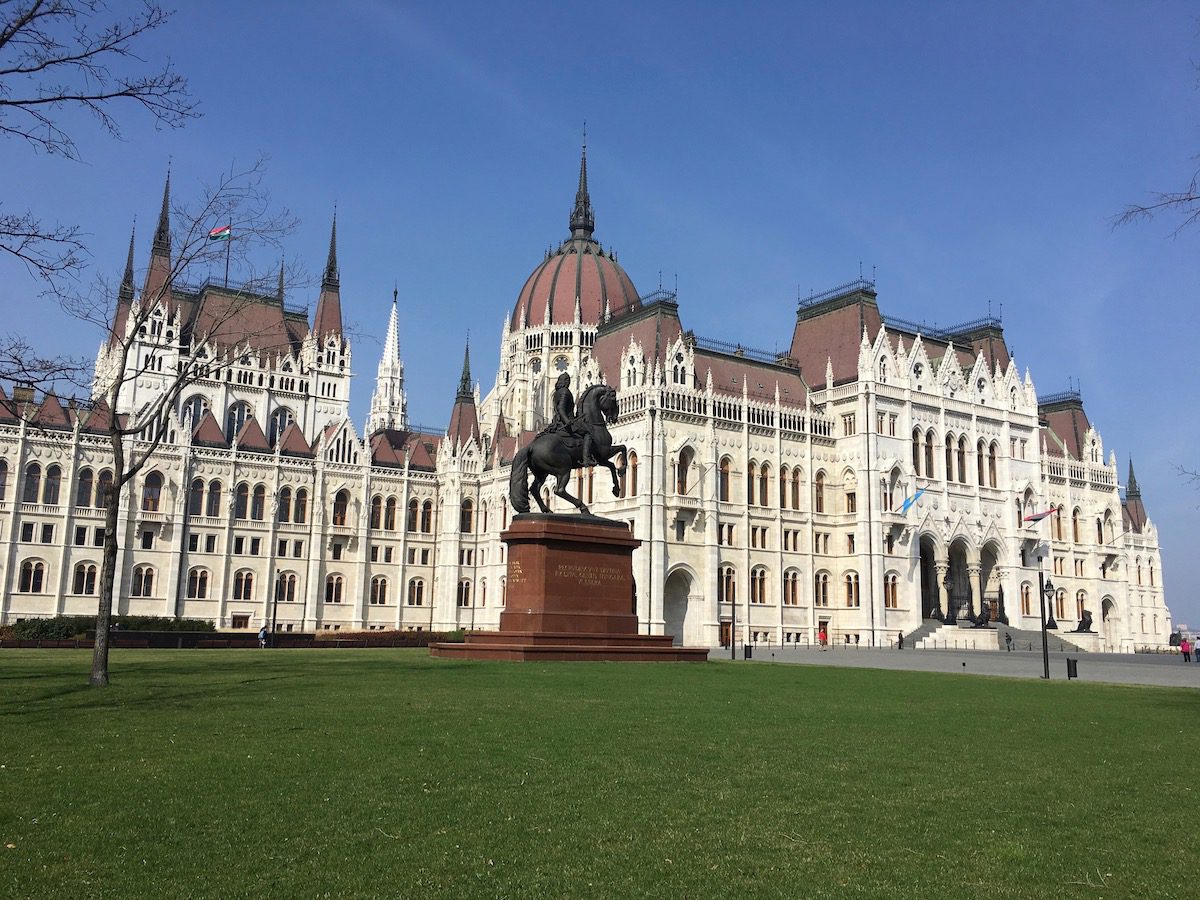
If you really don’t need to do any shopping (and honestly a lot of the shops are Western brands that you can find in all large cities), I would recommend that you take the tram along the Danube to Parliament. I just couldn’t get enough pictures of this stunning structure from every angle. But if you want to go inside, you need to book a tour in advance. The English tour books up quickly so plan ahead (at least a few weeks.)
At the end of the day, you can wind down and relax in the park at the Szechenyi Baths, a large, wedding-cake-like bathing facility where locals and tourists alike go to relax.
Evening
Seeing the Parliament building and Buda Castle lit up at night is a must-do when visiting Budapest. Be sure to book a night cruise with an open-air upper deck for the best pictures.
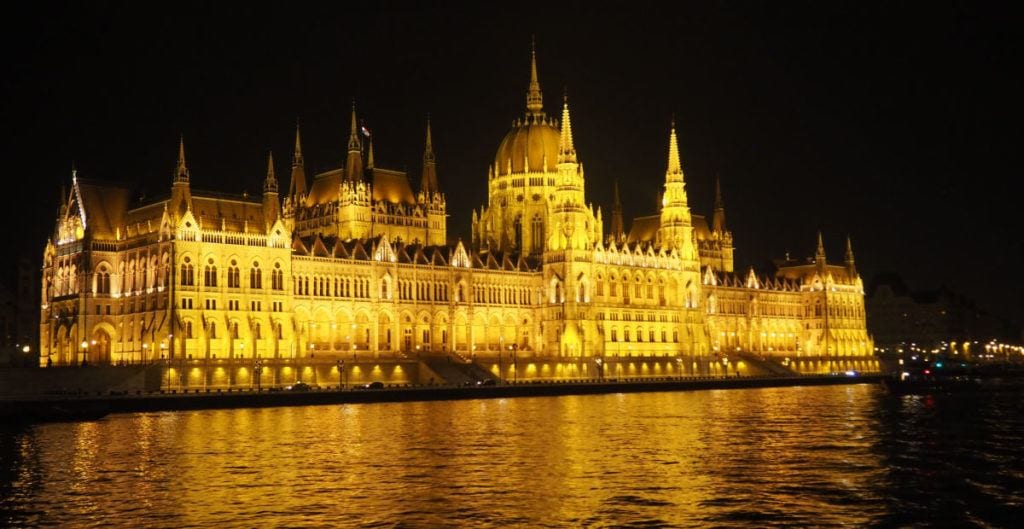
Day 2 in Budapest Itinerary
On your second day, I would encourage you to explore some of Budapest’s Jewish history and spend the afternoon on the Buda side of the river.
Morning in the Jewish Quarter
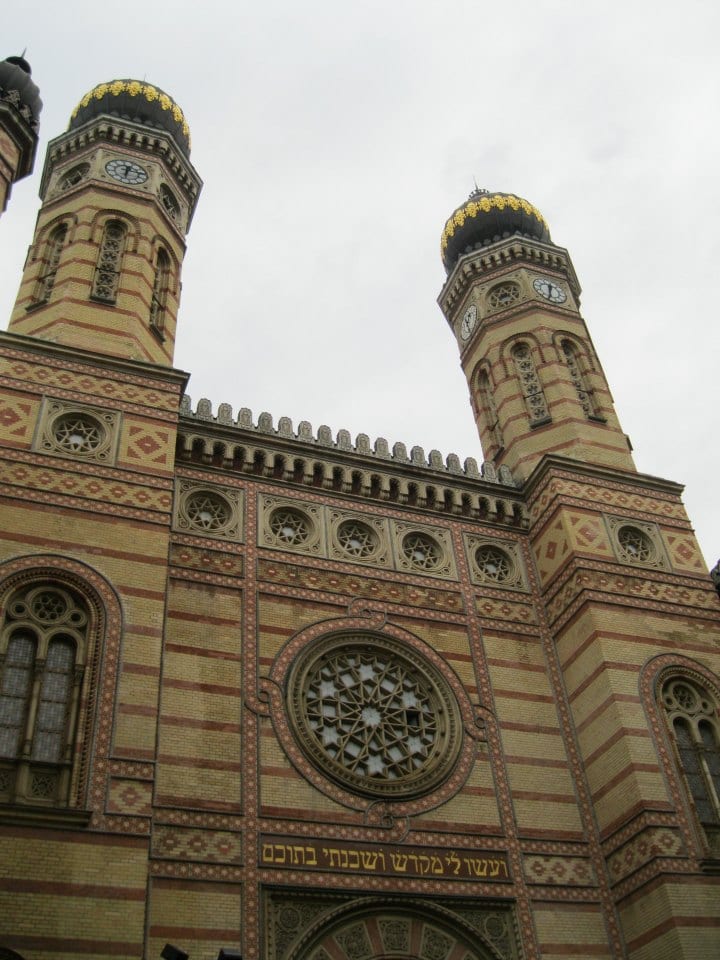
If you have an interest in Jewish history, I’d highly recommend a Jewish Heritage walking tour with Kata Nadas. As the granddaughter of four Holocaust survivors, she is an amazing and passionate resource that keeps the information flowing in an engaging way.
Even if you don’t take a tour, be sure to stop by the Dohány Street Great Synagogue. The largest in Europe and the second-largest synagogue in the world, it is unlike any synagogue we have seen before, with two clock towers topped with green onion domes. After visiting inside, walk around back to see the Memorial Tree, which is a beautiful tribute to Holocaust victims.
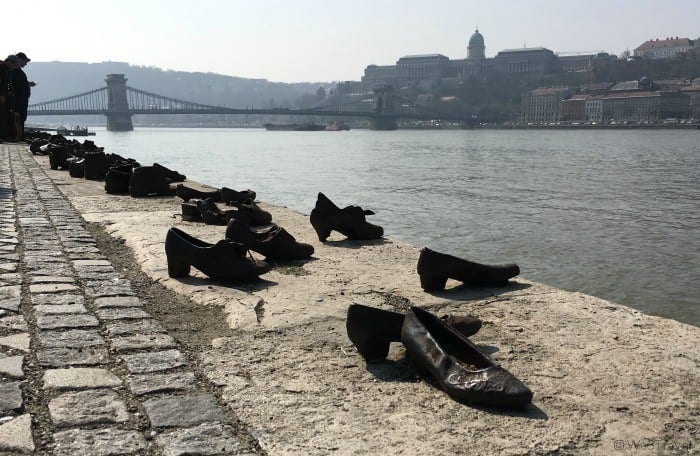
Another must-visit site is the emotionally impactive Shoes on the Danube Memorial. This memorial, which features 60 pairs of bronzed shoes, pays tribute to the 600,000 Hungarian Jews killed in the Holocaust and the 10,000 Jews marched from their homes in the city, told to strip, chained together, shot, and then thrown into the Danube. Give yourself time and space to take in the full impact of this powerful memorial.
After a visit to the synagogue, make your way back to the Deak Ferenc Tér metro station, and take Line 1 to the Hösõk Tér, or Heroes Square.
Here you’ll find a massive memorial guarding the entrance to the Varosliget, or the City Park. It is fairly easy to purchase tickets from the machines at the metro stations, just remember to validate the ticket when you get on the metro.
Afternoon in Buda
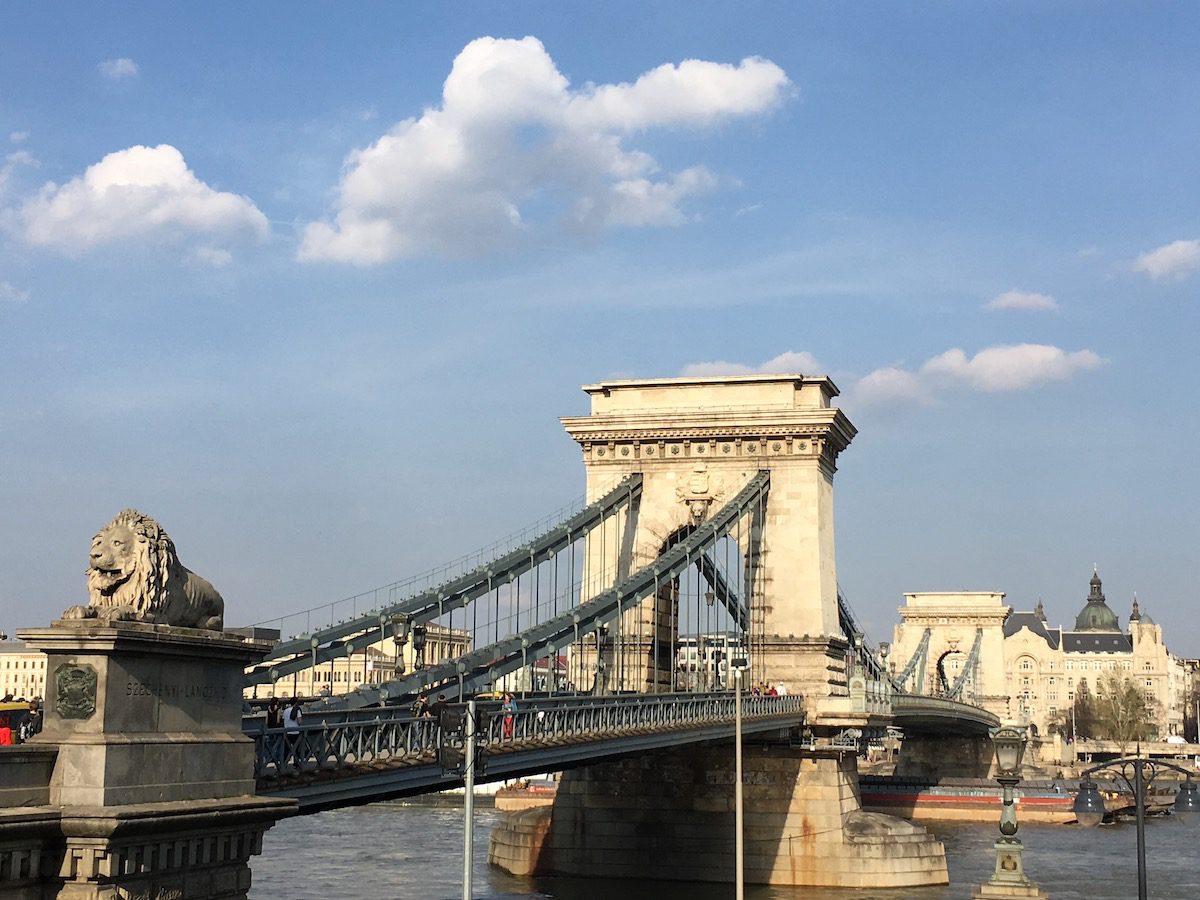
After lunch and a rest for your feet, cross to the Buda side of the city via the Szechenyi Chain Bridge, probably the most famous monument of Budapest. The beautiful stone and chain bridge spans the wide Danube River, connecting Buda and Pest. The bridge was rebuilt after the Nazis blew up much of Budapest when retreating, as was the palace.
Once in Buda, you can either take the funicular to the top or head to the left to the market and then make your way up the hill through a series of stairs and ramps to the Castle district.
The palace sprawls across the top of a steep hill on the west bank of the Danube River in Buda. Buda Castle, which was once the royal residence, is now home to the Budapest History Museum, as well as the Hungarian National Gallery, a world-renowned art museum.
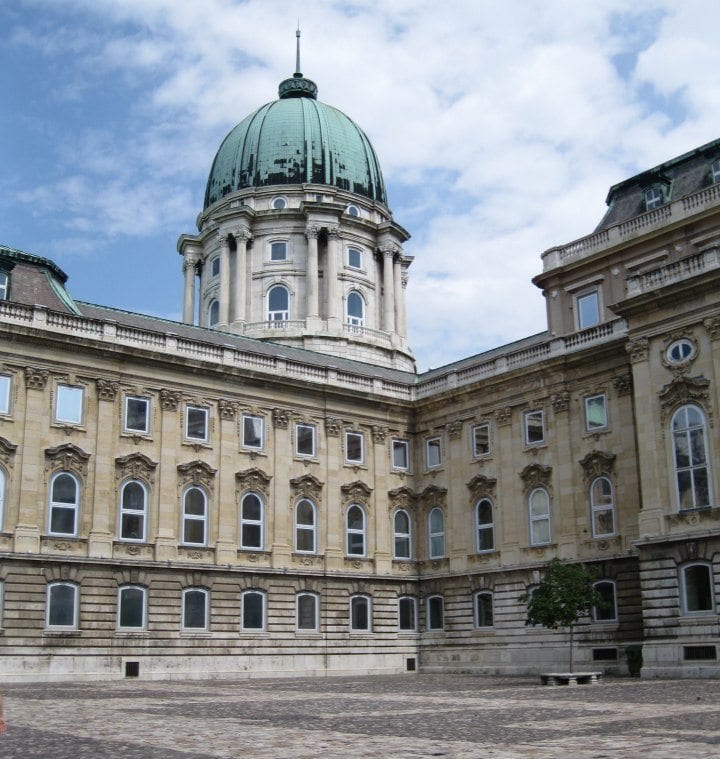
If you are a history buff, you may want to make time for the Budapest History Museum, where there was a great exhibit on the Hungarian Jews that immigrated to Shanghai during World War II. Locals advised us to skip the art museum and spend the time just enjoying the architecture and the views.
Try to time your visit so that you can see the changing of the guard at the palace at the top of the hour.
After a visit to the Castle, head north on Castle Hill towards Mátyás Templom (Saint Matthias Church). The roof of the cathedral is adorned with stunning mosaics, and the inside walls of the cathedral are decorated with Catholic relics and opulent walls and windows.
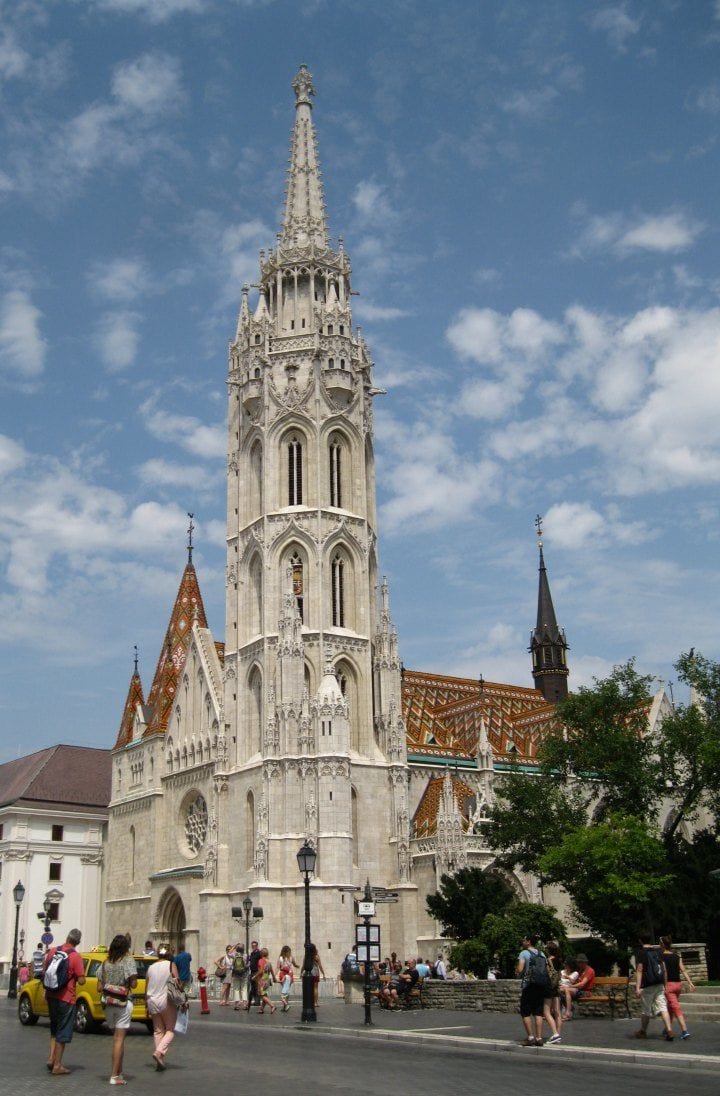
The church was the site of many of the most important religious events in Hungary since its foundation.
Next to the church is the Fisherman’s Bastion, a beautiful white arcade located on a hill next to the Church. Today, however, Fisherman’s Bastion is more of a tourist trap, the entrance fee is ridiculously expensive — you get just as good a view from outside the arcade.
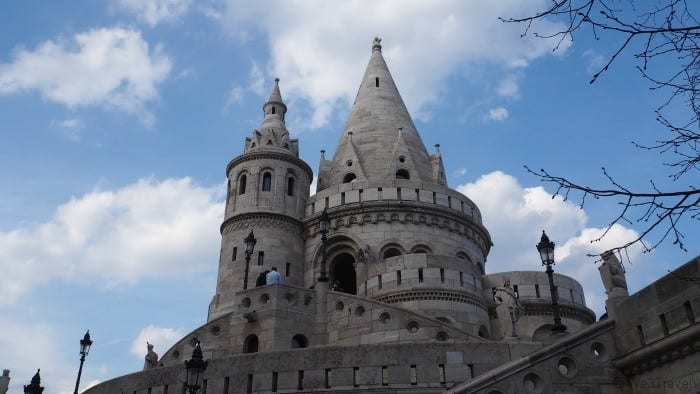
We actually loved hanging out near here and taking pictures because it reminded us so much of Minas Tirith from Lord of the Rings.
After a quick visit, walk north on Fortuna utca, the main street on Castle Hill, lined with shops and plenty of restaurants to dine at, with both inexpensive and expensive choices. If you have time, I’d suggest continuing north on Fortuna until you pass under the Vienna Gate.
Next, it is time to relax and unwind at the Gellért Baths. This bathhouse makes for a very different experience than the Szechenyi Baths, as it was designed in a Turkish rather than Neoclassical style.
If You Have 3 Days in Budapest
If you have 3 days in Budapest, consider beginning your morning with some climbing on the Gellért Hill and in the neighborhood of Tabán. The climb up the Gellért Hill to see the Citadel is tough, but the views are worth it and offer some of the best in Budapest.
The rolling hills are unique to Buda, and the area is one of the greenest in the whole city. From here, make your way to the Batthyány Tér metro station, and take the HEV (Budapest commuter rail) to Aquincum.
Just outside of the station are the impressive ruins of the Roman Aquincum built when Hungary was known as Pannonia and was under Roman influence. The ruins are impressive, so give yourself a few hours. After you visit the ruins, take the HEV back into town.
If you still have a few hours left to sightsee, consider making a visit to Memento Park, a grassy area filled with communist, Soviet-style statues torn down after the revolution in 1989. The hulking statues away from the city represent dark times past, but a bright future for Hungary.
Where to Stay in Budapest
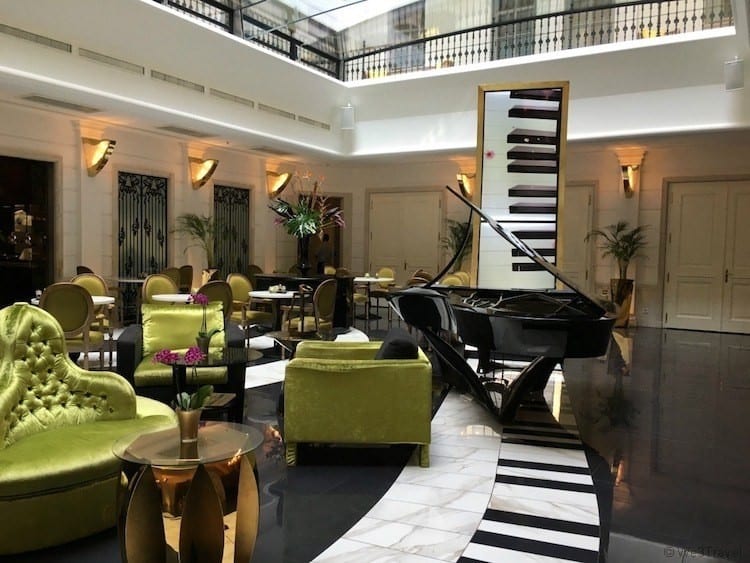
When deciding where to stay in Budapest, you need to determine if you would rather be on the Pest or Buda side of the city. Since Pest is more modern and offered more restaurant options, we chose to stay in Pest. We could not have landed in a better spot than the Aria Hotel Budapest.
Conveniently located on the Pest side of the city, the Aria is half a block away from St. Stephen’s Cathedral. It is easy to walk to many of Budapest’s top attractions, including Parliament, the Chain Bridge, and the Synagogue.
The Aria Hotel Budapest is entirely music-themed, from the piano keyboard adorning the walkway through the lobby, to the live music during the free wine and cheese happy hour that is offered to guests daily. Each wing of the hotel aligns with a musical genre — opera, classical, jazz, and contemporary. And each room or suite features a specific composer or artist. You can even borrow music CDs or DVDs from the hotel’s musical director to play in your room during your stay.

Even if you aren’t a music buff, the service and style of the Aria are bound to impress. What made an impression on me was also how many suite and adjoining room options there are for families. Even if it is hard to leave the comfort of your room, you should build in time to relax in the spa.
The spa is open for all guests and features a sauna, steam room, whirlpool, swimming pool, and fitness center. All that relaxing gets you ready to head up to the High Note Sky Bar. This rooftop lounge and 360-degree terrace offer stunning views of the dome of St. Stephen’s Cathedral and across the city to the Buda side. It is a happening
nightspot but hotel guests do get seating priority.
We loved our stay at the Aria Hotel Budapest and highly recommend it if you are visiting Budapest. (Note: I received a complimentary stay at the Aria Hotel Budapest. All opinions are my own.)
Where to Eat in Budapest
Food in Budapest is delicious, and it’s easy to find an excellent restaurant and have a nice meal without burning a hole in your pocket. Choose a restaurant that you’ll remember for your last night in Budapest.
Cafe Spinoza

Although there are several Jewish-style restaurants in the area, Spinoza is one of the only ones that still cooks its food in accordance with traditional Jewish dietary laws — in short, it’s one of the only kosher places left.
At the Spinoza Cafe, the food is authentic and good, but you really want to go for the atmosphere. Especially on Friday evenings, when a live klezmer band takes the stage. It is located in the Jewish quarter and is a perfect lunch stop after visiting the Synagogue. The goose matzoh ball soup will warm you up on a chilly day and we finally got to try some authentic Hungarian goulash (not the soup, but the main dish) with spätzle.
Located at Budapest, Dob u. 15., +36 (1) 413 7488, spinozahaz@spinozahaz.hu
Manna Lounge
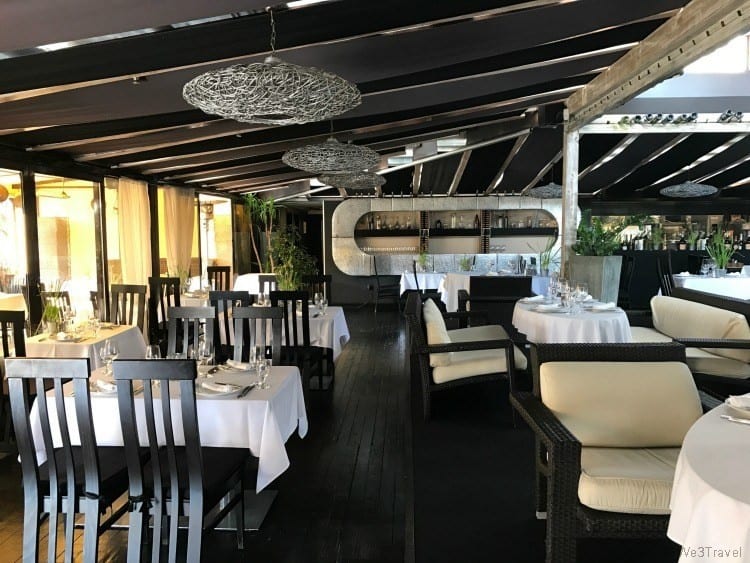
Located on the Buda side, this is a great place for lunch when you are visiting Buda Castle. It is just down the hill but tucked away enough that it is hard to find and completely off the tourist track (we had the place practically to ourselves.) There is an outdoor terrace and a very hip, spacious interior as well. I started with the smoke-flavored pressed pork belly spring rolls and for our mains, we had the chicken paprika and confited lamb with mini eggplant and tzatziki. Everything was delicious. Highly recommend this hidden gem!
Located at 17 Palota Street, Budapest 1013 Hungary, +3620/9999-188, info@mannalounge.com
Weather in Budapest in March

When we visited in mid-March, we really lucked out with gorgeous weather. It was in the low 60s (Fahrenheit) during our stay, which was much nicer than the cold and rainy weather we had in Vienna just before. Average temperatures in Budapest in March are usually a high of 53 degrees and a low of 38 degrees (around 12 and 3 degrees Celsius, respectively), with only a handful of rainy days.
Best Time to go to Budapest
If you want to avoid the bar scene that develops over the weekends, I would suggest you coordinate your visit to Budapest to fall between Monday and Thursday. The city will be quieter and you will get better pricing and availability. We found that spring was a good time to vist as the weather was pleasant, the pricing was shockingly good, and the crowds were light.
Budapest Tours
- 3-hour Orientation walking tour
- Jewish heritage guided walking tour
- Walking tour of Buda castle with a historian
- Budapest private food tour with a local
- Hungarian wine tasting experience
Tips for Visiting Budapest
- Make sure you book your tour of the Parliament building at least one day in advance, especially during peak season. English tours sell out quickly.
- Bring your own towels and shower caps to the bath houses. The towels are expensive and you usually cannot enter the swimming pools at the baths without a shower cap or a bathing cap.
- How onto your shoes and towels at the baths! It is not uncommon for these to get stolen if left unattended.
- Carry at least 400 forints in coins with you at any given time, in case you need to use a public restroom.
- Don’t trust the taxis — even the locals warned us that they don’t take cabs in Budapest! Stick to the public transporation instead.
- Remember to validate your ticket when getting on the metro.
- There is not Uber in Budapest but if you really need a taxi, there is an app called Fötaxi for ordering a standard taxi.
- If you are going to be using the trams, you may want to download the BudapestGO app for maps and schedules.
PIN THIS FOR LATER
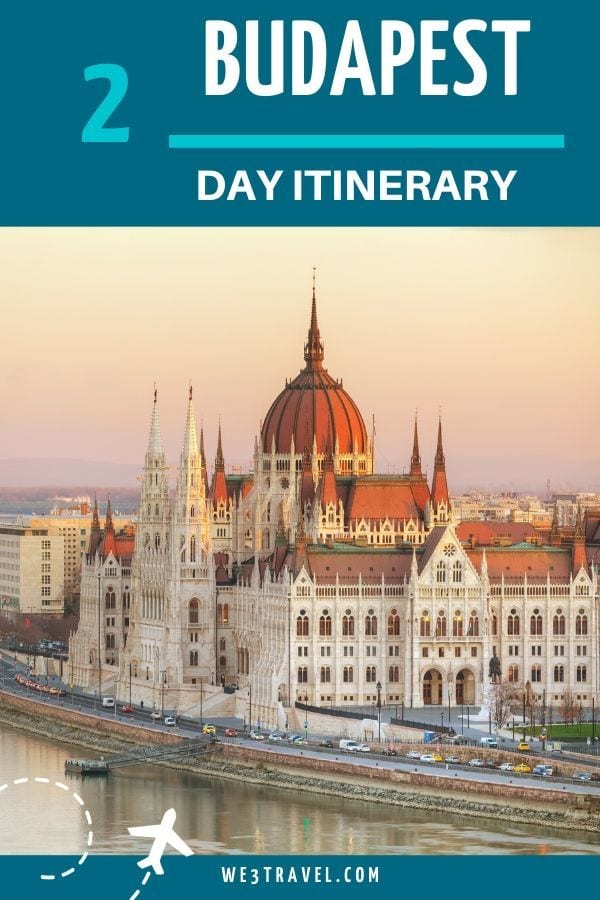

Tamara Gruber is the Founder and Publisher of We3Travel. A former marketing executive and travel advisor, Tamara is an award-winning travel writer and recognized expert in family travel. Tamara is a member of SATW, NATJA, IFWTWA, and the Adventure Travel Trade Association, and serves on the Board of the Family Travel Association. She is also the publisher of YourTimetoFly.com and the co-host of the Vacation Mavens travel podcast.


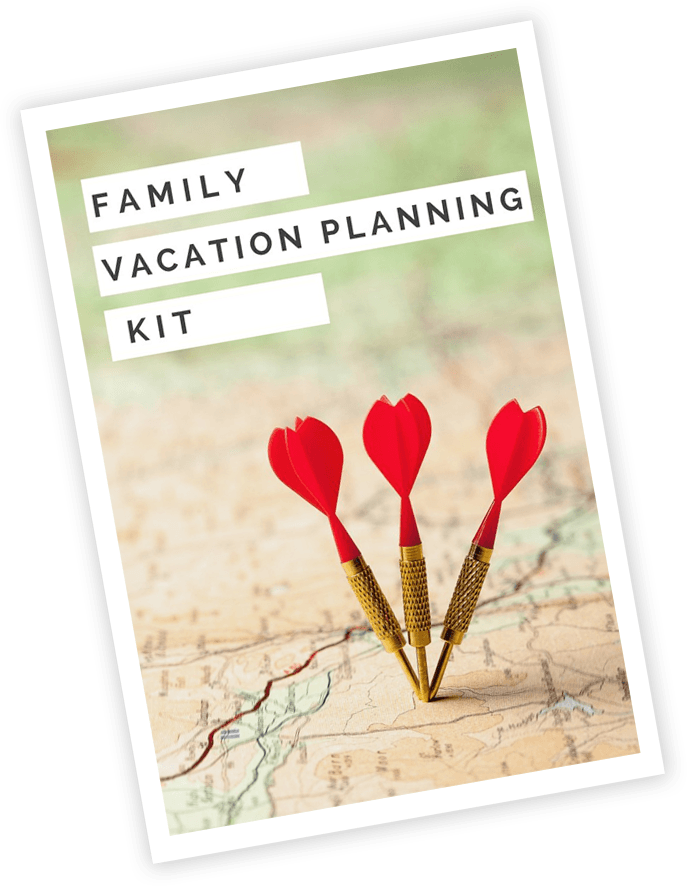
Yes, we were there in March and the weather was beautiful and it wasn’t too crowded yet.
My wife and I will be in Budapest August 5. We will like to have a guided tour of Budapest on those 2 days. Do you do that?
No, I write about our travel experience but do not provide guiding services. In Budapest, I highly recommend Context Travel tours.
Hello,
Thank you so much for such a well explained itinerary 🙂
My husband I will be travelling to Budapest this December for two days and will reach Budapest via Train from Prague, an overnight journey. Since most of the places close by 4 during this time, do you have any suggestions as to how I can modify my itinerary, if I replicate yours :). Also, I am taking the the liberty to follow day 2 schedule on day 1 as we will reach Budapest at 9 in the morning and then head to hotel to change and freshen up. So 1/4th of our day will be wasted.
Also, if any other suggestions or recommendations to visit during this time of the year would be appreciated.
Thanks much,
Pooh 🙂
One thing I want to do when we go in march is visit the Central food hall and also a boat ride on the Danube.
My 3 girlfriends and I will be in Budapest for 3 days. Your 2- day itinerary looks perfect for us. Thank you for sharing
Hello, my3 are travelling in December, do you still think we can follow your itinerary this time of year? Or are their other suggestions for this colder time? Any advise greatly appreciated,
Thanks Libby
Most of these sights are good year round. It will be so pretty in December!
Insightful article indeed. I’m coming to Budapest on business soon and will have only one day to explore the city. My question would be, what is the best way to get into the city from the airport?
Hello,
We were in Budapest a few months ago and we will be publishing a review of Budapest for our blog in the next days. I must agree with you, it’s a fantastic city to spend a few days.
Just one note, we didn’t have any problem finding people who speak English, and as you said Hungarian is way too difficult to try and learn anything 🙂
http://www.couplertw.com
Fisherman’s bastion is very cheap!! $7 for 4 people to enter. We were just there last month! Also found a great cafe for coffee as we were walking through the city – Central Cafe. Loved the architecture in Budapest. Parliament was amazing!
Great tips and advice! I’ll be over that way during the summer and I may just have to take advantage of this guide. 🙂
Can’t wait to see how it works out!
I loved Budapest, it’s definitely one of my favourite European cities so far. Excellent article, you really highlight the best bits of Budapest. I would have liked to have explored Buda Castle and spent some more time there, but at the time there was some sort of fayre happening so it wasn’t all open. I think my favourite site was St Stephens Basilica – It was a couple of minute walk from out hotel!
Great post! We were actually in Budapest for a week in October and absolutely fell in love with it. I agree with everything you said other than not to stay more than 4 days…I personally could have stayed much longer and in fact could see myself living there. I suppose though if you’re touring around Europe and have other places to see 3-4 days could be long enough. We did do everything you had listed including the baths and enjoyed it all.
Great Sarah! It seems like a few bloggers have stayed there for a year or two.
Wonderful post! So well written. Budapest is one of those places that just keeps evading me. I actually had flights booked to go there a few years back when I was living in London but they had to be cancelled for personal reasons. One day when I am next in Europe it is top of my list! Thanks for sharing your experience and passion Max and thanks Tamara for showcasing such a talented young man.
Thank you Jen for stopping by and leaving such an encouraging comment.
As someone who has lived in in Budapest for a couple of years, this is a really great overview and itinerary that highlights much of what the city has to offer. Great job Max! I’m super impressed that you’re only in the 9th grade. Keep on traveling 🙂
Thanks for commenting Adelina and I am glad to hear you approve of Max’s recommendations! Let me know if you have any “must dos” to add.
What a dream vacation! Every time hear Budapest, I think of the Avengers!
It looks beautiful there!
I’ll have to ask my husband about the Avengers